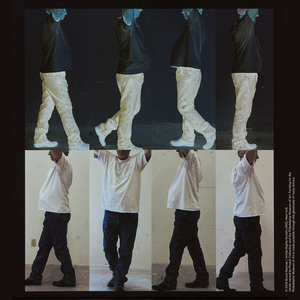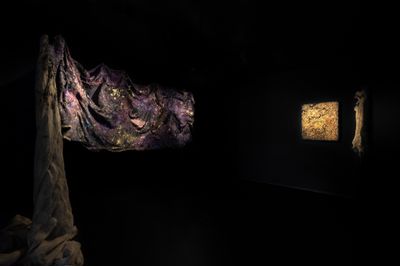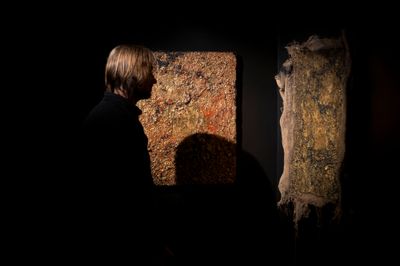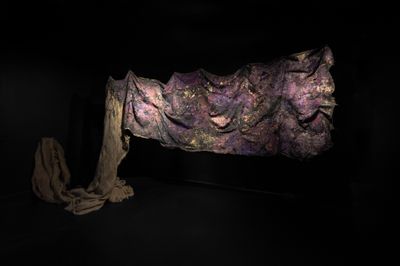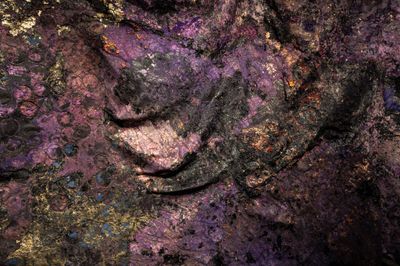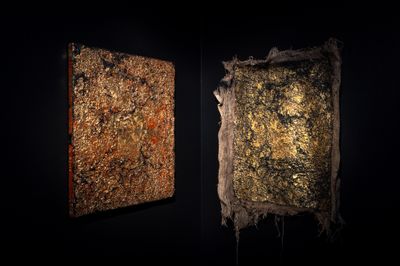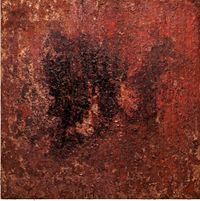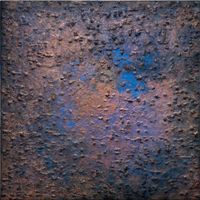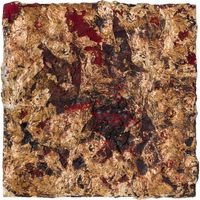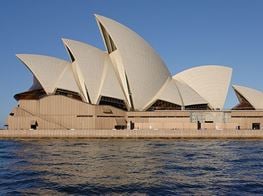Kirtika Kain’s Elemental Journey
A small suite of experimental works by Australian-Indian artist Kirtika Kain uncovers a new vein.
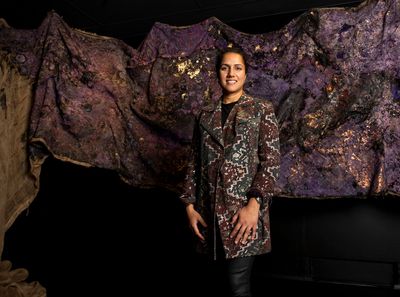
Kirtika Kain. Courtesy Mosman Art Gallery, Sydney. Photo: Cassandra Hannagan.
Walking into a darkened space at Mosman Art Gallery on Sydney's well-heeled Lower North Shore, Kirtika Kain: Tar (18 May–18 August 2024) is heralded by the strong smell of tar, which seems incongruous with the leafy streets of Federation homes, as does a practice that references India's caste system. But thanks to a booming real-estate market, class, if not caste, is alive and well in Australia, and maybe an affluent suburb like Mosman is the perfect place for Kain to dwell on these ideas.
The Australian-Indian, Sydney-based artist has had a busy five years. Since finishing her Masters studies at the National Art School, Sydney, in 2018 with the University Medal, Kain has won a slew of art awards, scholarships, and grants. In 2023, her work was the subject of a sold-out show, Blue Bloods, at Roslyn Oxley9 Gallery in Sydney.
Kain's work is also on show at the Museum of Contemporary Art Sydney as part of the 24th Biennale of Sydney, Ten Thousand Suns (9 March–10 June 2024). The painting The illusion of your history (2023) is an enormous work on canvas at 3.5 by 10 metres, with an extensive media list that includes gold, copper leaf, wax, cotton wicks, human hair, wire, plastic, cow dung, fabric, pigment, plasticine, coconut broom grass, grains, spices, and tar.
Of the scale, the artist explains she laboured over it for four months at her mother's home because her studio was not large enough. Its size was important for Kain to 'speak of celebration and the enormity and impossibility of articulating the inheritance ... of my Dalit history.'
It's a challenge that Kain chooses to explore through media as well as size, noting in a talk at Mosman Art Gallery that 'sometimes when an artist is not able to articulate the complexity of your own practice, the material holds that space.' Acknowledging the historical discrimination of the Dalit caste, classified as 'untouchable' and often denied entry into temples and excluded from religious activities, the artist uses expensive, high-end media of religious art-historical pedigree—gold leaf, bronze, and copper—to return inclusivity to her Dalit ancestors, and somewhat subversively mingles these with everyday, non-art media such as tar, cow dung, turmeric, coconut leaf, and lotus seed.
Although Kain continues to use these elements in her Mosman show, the three new works on view also mark a departure for the artist as she moves from canvas to hessian. While experimenting with materials in her studio, she inadvertently came across a technique similar to strappo (detachment), a method used to preserve frescoes by transferring the surface of a painting to another with the aid of glue and cloth. In Kain's version, she smears the canvas with tar, lays a sheet of hessian over it, then peels off the painting, so the underlying layers that have culminated are brought to the surface.
Tar (2024) is the centrepiece of the exhibition, dominating the small, darkened space with its scale and its rich luminosity. A large piece of hessian rises unadorned from the ground, before morphing into a richly pigmented but disintegrating carpet of baroque purples and gold, interspersed with areas of tar-black, glimpses of green, blue, and orange. Bare hessian is visible in patches where the tar has not been applied, and its rough weave recalls simple clothing as well as rural work.
Circular imprints, made by glass bangles, reference the bracelets traditionally worn by women of the Dalit caste. Kain explains, 'I am interested in the woman's body, the history of Dalit women, the intersection and double discrimination that Dalit women face in the caste system... I am interested in the relationship of the materials to the body, the ideas of purity and impurity, pollution, and exclusivity.'
Two smaller pieces are paired: Tar study I (2024) resembles Kain's earlier works on canvas but its gilt and burnt-orange pigment is now marked by the tar applied in the process of transference that has created the hessian work Tar study II (2024). While the former retains some of its original polished and measured construction, it is changed by the presence of its other half, which resonates unpredictability, its roughness giving the viewer an alternate view.
In the act of transference, the artist damages and complicates, continuing her interest in revealing what has been hidden as she unearths and celebrates her history. —[O]


